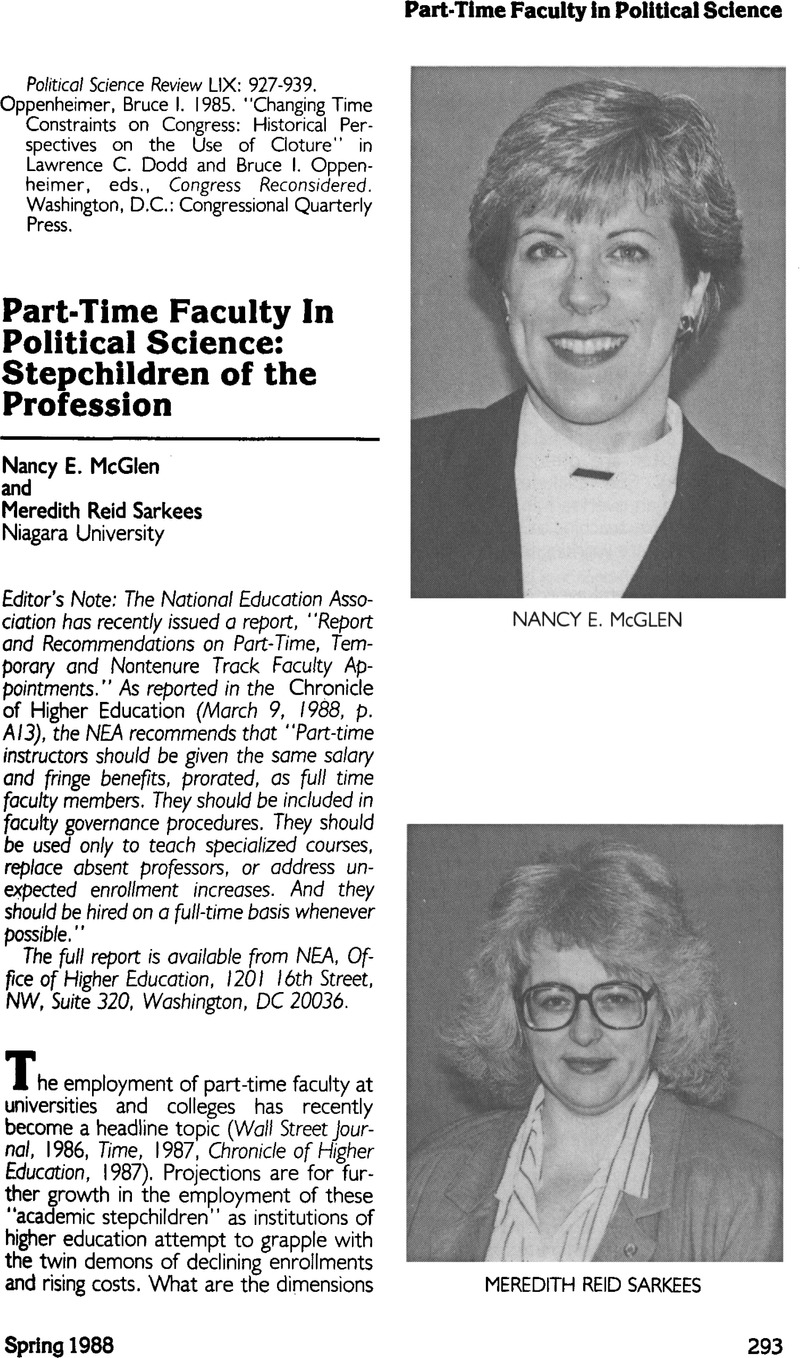Crossref Citations
This article has been cited by the following publications. This list is generated based on data provided by Crossref.
Sarkees, Meredith Reid
and
McGlen, Nancy E.
1999.
Misdirected Backlash: The Evolving Nature of Academia and the Status of Women in Political Science.
PS: Political Science & Politics,
Vol. 32,
Issue. 1,
p.
100.
Bergart, Ann M.
and
Simon, Shirley R.
2005.
Practicing What We Preach: Creating Groups for Ourselves.
Social Work With Groups,
Vol. 27,
Issue. 4,
p.
17.





